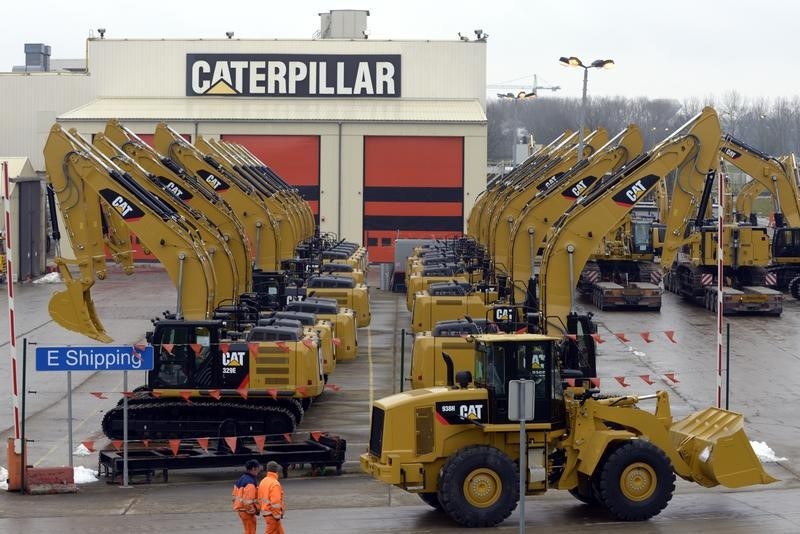Investing.com -- Shares of Caterpillar Inc (NYSE:CAT) fell 2.6% in pre-open trading after Morgan Stanley (NYSE:MS) downgraded the stock to “underweight” from “equal-weight.”
This shift in outlook comes amid concerns about potential destocking within the company's Construction Industries segment and a revised price target of $332, down from $349.
Analysts at Morgan Stanley have pointed to increasing pressures on Caterpillar’s CI segment, driven by a combination of factors. They flagged a potential downturn stemming from bloated channel inventories in the U.S. construction equipment market.
As the supply chain normalizes and competition intensifies, the firm believes that current inventory levels may lead to de-stocking, creating additional downward pressure on earnings.
Morgan Stanley's 2025 earnings per share estimate for Caterpillar is now projected to be 10% below consensus estimates, reflecting this cautious stance.
The research note indicates that while Caterpillar's shares have outperformed year-to-date, the stock is now trading at a valuation that suggests investors are expecting a re-acceleration in growth.
Morgan Stanley maintains that current pricing multiples, which are hovering around 18 times earnings, do not align with their forecast of peak earnings, leading to what they describe as a negative risk-reward scenario for the stock.
Caterpillar's earnings are limited by offsets as per Morgan Stanley. CI segment challenges may not be sufficiently counterbalanced by tailwinds from mega projects and improvements in manufacturing costs, the brokerage said.
Additionally, the brokerage expects pressures on CI margins as revenue forecasts decline, further exacerbating the risk of negative earnings revisions.
In light of these concerns, Morgan Stanley has adjusted its estimates for Caterpillar. Their forecasts for third-quarter adjusted EPS remain steady at $5.09, while projections for fiscal year 2024 and 2025 have seen slight declines, with adjusted EPS now set at $21.74 and $20.72, respectively.
The analysts point to the possibility of lower construction industry volumes starting in late 2024 and reduced pricing in early 2025 as contributing factors to these revisions.
Analysts have identified the main risks to their thesis, including any unexpected supply shocks or a rebound in demand that could mitigate the need for de-stocking.
They suggest that a strong recovery in the resource industries, driven by increased mining capital expenditures, could also alter the earnings outlook more positively than currently anticipated.
